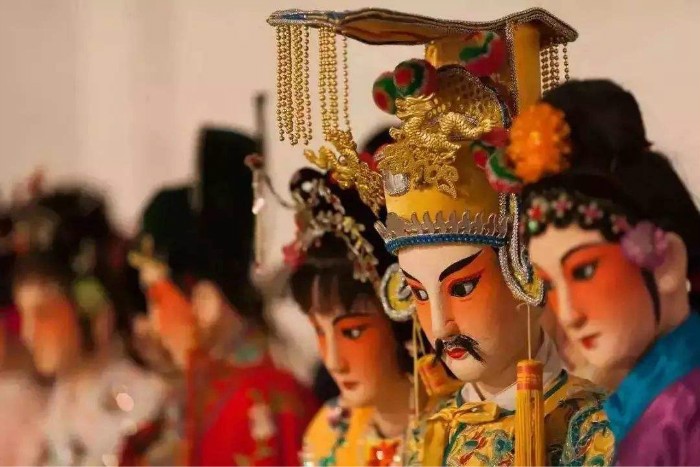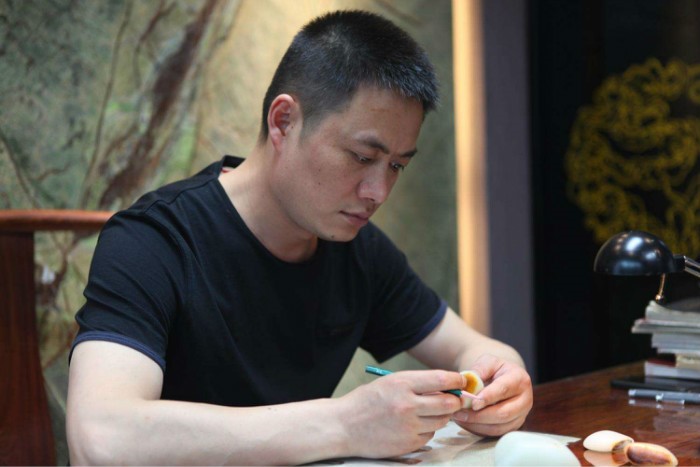There are several forms of puppet shows in China. Read More
How to Buy Traditional Chinese Clothes in China
Want to bring back the right gift from your adventure in China? Why not wear something? Traditional Chinese clothing is a good way to bring part of the east home. Read More
The Shu School of Chinese Embroidery, The Symbol of Chengdu
The art of embroidery was widely spread throughout China during the han dynasty. Read More
Chinese Pottery, the Oldest Artwork of Human Beings
Pottery is probably man’s oldest work of art. As early as the neolithic age Read More
Chinese Kites, A Phoenix-shaped Kite
In ancient China, kites were called “paper kites”. Originally regarded as a technique, it also occupies an important place in many art collections and is considered to have unique artistic value. Read More
Political Advisory Body Urges Inclusion of Tai Chi on World Heritage List
The Chinese Peasants and Workers Democratic Party (CPWDP) Read More
Nanyin Music,One of the Oldest Existing Music Genres in China
Nanyin is one of the oldest extant musical genres in China, Read More
Chinese Shadow Puppetry, Shadows of Leather
Shadow puppetry, or Shadow Play, was very popular during the Tang and Read More
Chinese Folk Toys, An Indispensable Part of Traditional Folk Art
As an indispensable part of traditional folk art, toys are a unique expression of the long and uninterrupted Chinese history. Religious beliefs, world view, taste, classical works and local customs, especially festivals and the ‘Four Great Classical Chinese Literatures’, are all represented by the use of various techniques requiring an artisans’ deepest wisdom and creativity. The advantage is that the greater majority of people can enjoy the pleasure of toys that are easier to make and more widely available than other artistic works such as jade or silver wares, as they tend to utilize common articles that are readily available, such as cloth, grass, straw, clay, paper, and so on. Even so, it should be noted that these toys are not of a coarse manufacture, but of rustic simplicity and vivacity.
Generally, the diverse variety of folk toys can act as decorations to be appreciated or as knickknacks to be played with. As such, the two categories are those for festival decoration and those for daily enjoyment.
Chinese Folk Toys Those during festivals are quite flowery and customary. In the Chinese New Year, people use firecrackers and fireworks; in the Lantern Festival, there are lanterns in the shape of lotus, monkeys, dragons, etc; in the Pure Brightness kites will be flown in the blue sky; and during the Dragon Boat Festival, people will take sachet with them. Old people’s sachet looks like a peach, symbolizing longevity while children’s sachets are of lovely patterns, with fragrant herbs inside to ward off evil spirits. In ancient times, they were also a token of love that a girl would give to her beloved.

88-year-old Wood Engraver Carves Name in History Books
Chen Yiwen, who celebrates his 88th birthday on Monday, is the only living artist in hubei province with a high level of artistic achievement in wooded New Year paintings.
Chen is a national inheritor of the laohekou woodcut New Year paintings, which originated in the mid-ming dynasty (1368-1644) and flourished during the qianlong reign of the qing dynasty (1644-1911).
The whole process of woodblock printing mainly includes the following steps: material selection, sketching, woodblock printing, printing, coloring, drying. The subject of the painting includes ancient history or legendary figures, door gods, etc.
Chen’s works are bright in color and meticulous in line, and still retain the original local characteristics and folk flavor. One of Chen’s wooded New Year paintings was selected as an art textbook for middle school students in hubei province, and his works have been exhibited all over the country, as well as in Russia and Italy.
Chen began to learn handicraft at the age of 14 and started to create by herself at the age of 16. From Chen’s grandfather to his father, the technique has been passed down through the family, and now Chen’s grandson has inherited the craft.
During the flourishing period of New Year paintings, people still kept the tradition of sticking New Year paintings at home. There were still no machines to replace the handwork.
But now, few people still use hand-carved wood paintings, and Chen says the technology is disappearing.
To better inherit the technology, Chen has opened training classes, which are attended by about 30 students a year.
In 2011, Laohekou woodcut New Year paintings were included in the national intangible cultural heritage list.
Currently, Xiangyang, Hubei province, has 8 national intangible cultural heritage, 30 provincial projects, and 83 municipal projects.
